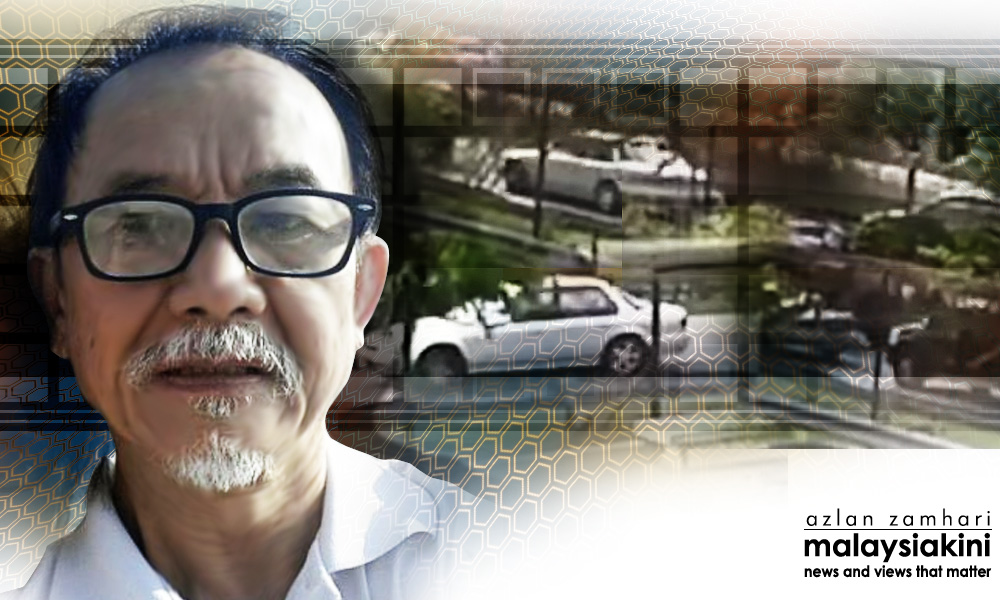I feel very much compelled to address certain issues regarding inspector-general of police (IGP) Khalid Abu Bakar’s latest public statement on the abduction of Pastor Raymond Koh that seem highly disconcerting.
It was reported that a fatal shootout between police and a suspected drug dealer occurred in Baling on June 17. This led to the subsequent discovery of links to Koh’s abduction, as revealed a week later on June 25 by the IGP.
His brief press statement, almost casually delivered and captured on video, whatever the intent, makes little headway in finding Koh’s whereabouts, and leaves too many loose ends.
On June 17, Kedah police chief Asri Yusoff said that the police believed the suspected drug dealer was running the smuggling of arms and drugs from Thailand along with the help of his wife. For that reason, they brought her in too for questioning.
If the Kedah police think that he was a small-time lone operator, how is he now linked to a large syndicate? Why the difference between Kedah police and Bukit Aman accounts? Also according to June 17 news reports, police had already by then found sets of false number plates in the suspect’s car, as well as syabu, drugs, ammunition and pipe bombs in the suspect’s house.
There was no mention of photos and Pastor Raymond Koh’s car number plate then. These were only "reported" more recently. Who discovered them and when? If not the Kedah police, then why? Has such critical evidence been in the police chain of custody, or might there have been tampering that renders it dubious?
The suspected drug dealer died carrying RM1000 worth of drugs. Even including the RM17,500 worth of drugs found by police at his home, this makes him a relatively small-time dealer, and not a mastermind.
For one thing, a criminal mastermind would not engage in a shoot-out alone with armed police. Wouldn’t it be so much easier and safer to pay them off? In fact, if anything, he is likely to be near the bottom of the drug gang food chain, perhaps even a drug user himself.
If he were in the least involved in the pastor’s abduction, it might have made much more sense for him to squeal, enabling him to claim the RM100,000 reward offered by the pastor’s family for information on Koh. That, however, only points to the much larger issue in this development.
People who traffic drugs and arms purely for financial gain are not motivated by religious ideologies like attacking preachers who allegedly proselytise, which was the IGP’s premise in investigating the pastor. If they had kidnapped for money, a ransom would have been sought, but none has been received.
In addition, kidnapping a penniless pastor simply makes no monetary sense. Even if they were hired killers, there are much cheaper ways to complete the job, as we have seen in other crimes - men on two motorbikes can complete the job with much less hassle and risk. Such hits usually leave the body at the scene, helping to advertise the hitmen’s services in the underworld market very effectively.
Now, even supposing they were paid to perform this risky complicated operation, who was the paymaster? Where did the money come from? And how much did the job cost? There are now three syndicate members who have been arrested (plus the suspect’s wife) and one killed.
The three members, aged between 30 and 60 years old, were picked up in three states, and the syndicate is said to operate at the Malaysian-Thai border. Are they known to operate in KL? How large is this syndicate, and is it large enough to gather and launch a cross-state convoy of vehicles? What is their command structure, and is it sophisticated enough to coordinate such a big operation?
At least 17 men were involved in Koh’s abduction on February 13, 2017, for which video evidence is publicly available. These men must have come together to plan and train, and known each other well enough to execute a military-style operation. There must yet be others who were involved in target surveillance, back-end operations, logistics support, and the post-abduction follow-up.
So where is their base? Where are the seven vehicles? The IGP brought up one more loose end - the Thai connection. He suggested that the syndicate was involved with Thai-passport-carrying smugglers at the Malaysian-Thai border.
This brings to mind the activist Peter Chong who went missing in April, and his claim that he had been abducted in Haadyai while seeking information about Koh’s disappearance. This was then rubbished by the IGP and media.
Might there now be an ounce of truth in Chong’s claim? The police took statements from him and were waiting to corroborate his story with the Thai police. What are the updates of that investigation? Is the IGP now vindicating Peter Chong’s story that Koh’s abduction indeed could have a Thai connection?
The IGP had revealed on May 24 that a man had been detained in a northern Malaysian state the week earlier and that his arrest was relevant to Koh’s investigation. There has been no further news since then. Was he involved in the abduction? Is that individual linked to current arrests?
The IGP on behalf of the Royal Malaysian Police (PDRM) and the government authorities have not been entirely silent on this abduction. The victim is a common citizen, but his plight is a nationwide concern, and one that has been covered extensively by media locally as well as internationally.
We hope the IGP’s most recent as well as previous revelations were not premature. We trust that the PDRM can not only bring into custody all those involved in Koh’s abduction, but find the victim himself and bring closure to the family and our nation. - Msiakini Hannah Goh published on 5 July 2017


No comments:
Post a Comment